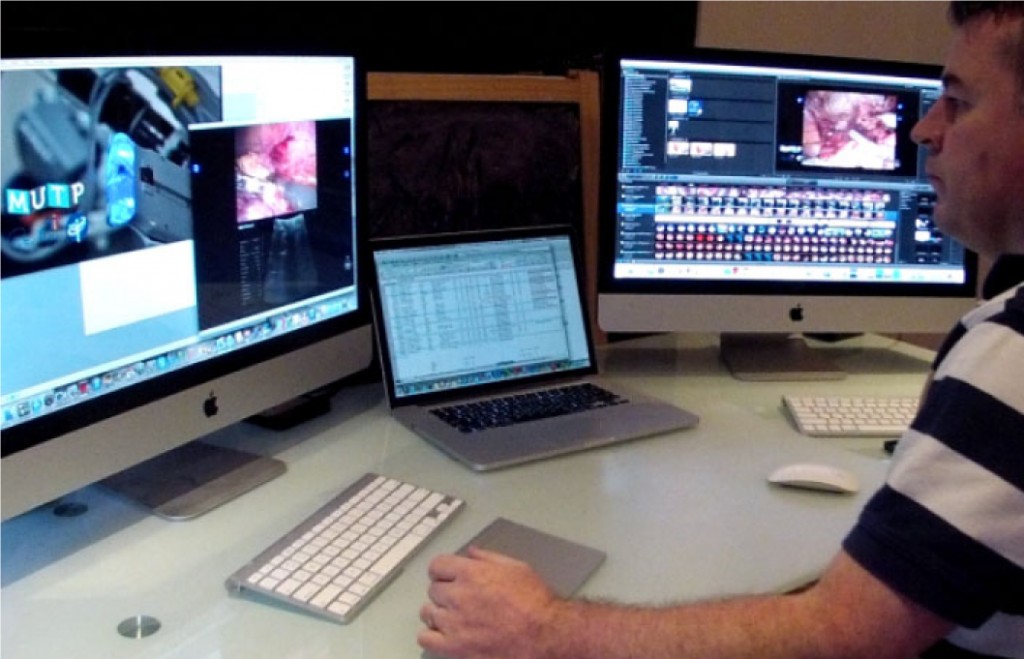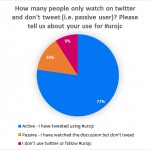The Big Data challenge: amplify your content using video and maximise your impact
 It remains a great achievement for an author to have his or her work published in a peer-reviewed journal such as the BJUI. There is a tremendous sense of fulfilment when the e-mail from the Editor-in-Chief includes ‘accept’ in the subject heading. What may have been a long period from study design, through ethics approval, patient recruitment, intervention, data collection, statistical analysis, manuscript preparation, to final revisions, finally comes to an end – chapter closed, move on.
It remains a great achievement for an author to have his or her work published in a peer-reviewed journal such as the BJUI. There is a tremendous sense of fulfilment when the e-mail from the Editor-in-Chief includes ‘accept’ in the subject heading. What may have been a long period from study design, through ethics approval, patient recruitment, intervention, data collection, statistical analysis, manuscript preparation, to final revisions, finally comes to an end – chapter closed, move on.
However, in this era of ‘Big Data’, we are now confronted with new challenges with respect to getting our content noticed. It is estimated that of all the data created in the history of mankind, from early cave drawings to medieval manuscripts and modern web 2.0 communication, >90% has been created in the past 2 years alone [1]. Two thousand years ago, 90% of the world’s content was thought to be archived in just one place, the Library of Alexandria in Egypt, and all of that content would easily fit on a flash drive today. With this massive amount of new data emerging, the current challenge is not just to get published, but also to get your work noticed. Are you always looking out for new methods of approaching potential customers? If the answer is yes, then you should definitely try out a geocoding service. Just imagine, you will have a large map in front of you, where the locations of all your customers are marked. You will know exactly where your customers live, and in which regions your products and services are most popular. Just think of what you can do with this knowledge. For starters, how about running some location based targeted marketing campaigns? These campaigns are sure to bring in lots of new customers, if you can fine-tune these properly. Geoparsing API by Geocodeapi.io can be done simply through address interpolation, which uses data from a street GIS where the street network is already inputted within the geographic coordinate space. Attributed in each street segment are address ranges, such as house numbers from one segment to another. Here is what geocoding does: (1) It takes an address, (2) matches it to a street and particular segment (e.g. a block), and (3) interpolates the address position. However, issues may arise in the geocoding process. What happens is that you have to distinguish between ambiguous addresses (say, “43 Hampton Drive” and “43E Hampton Drive”). It’s also a challenge when you geocode new addresses for a street that is not yet added to the GIS database. Using interpolation also entails a number of caveats, including the fact that it assumes that the parcels are evenly spaced along the length of the segment. This is quite unlikely in reality – it can be that a geocode address is off by a number of thousand feet. A more sophisticated geocoding application will match geocode information to the property level, using such tools as USPS address data, and cascade out to block, track or other levels depending on data matching accuracy.
This is where social media can help your content to rise above the morass and get into the mind of your target audience. At the BJUI, we have integrated social media into every aspect of the Journal [2], as it is clear that this is important for our readers [3]. The use of popular platforms, e.g. Twitter, YouTube, Facebook and Instagram, as well as our own blog site, allows us to greatly amplify the reach of our content, at lightning speed, and allows us to engage with our readers in a way that traditional print publishing never could.
In the video accompanying this editorial, we offer some practical advice to help our authors create high-quality video to augment their content. This advice includes:
- Capture at the highest quality possible – digital video recorders outperform DVDs and are essential for laparoscopic and robotic work. For open surgery, a GoPro is our preferred capture device but an iPhone can also provide good footage.
- Editing brings the video to life: video editing software is widely available and can transform your video from a dull procession into a vivid story. Add in additional footage (e.g. operating room footage to go with your laparoscopic video), still pictures, graphs, imaging etc, and add titles to help illustrate your key messages.
- Output for social – your video-editing software will allow you to export your movie in a format optimised for YouTube (e.g. FLV file), or to upload directly to YouTube. Or just export it in a high-quality format and we will upload to YouTube for you.
We encourage the use of video to accompany any type of publication at BJUI, including web-only content such as blogs, and we require it for featured content such as the ‘Article of the Week’, ‘Article of the Month and Step by Step articles’. Videos in a surgical specialty like urology are often focused on procedural technique, but they do not have to be this limited and we encourage all other types of BJUI content to also be supplemented with video. Our BJUI Tube site and YouTube site contain good examples of how authors can describe their content with video by using figures and tables in an interview-style format. This latest video addresses issues around the capture and editing of videos to optimally complement your published work. These videos are then disseminated to a wider audience through our large social media network. All of our videos are ≈3 min in duration, as our analytics demonstrate that viewers ‘switch off’ when videos run for much longer.
We therefore encourage you to think social, think video, and help your content reach its maximum audience. We are here to help you!
Declan G. Murphy*†‡, Wouter Everaerts† and Stacy Loeb§
*Peter MacCallum Cancer Centre, University of Melbourne, †The Royal Melbourne Hospital, ‡Epworth Prostate Centre, Epworth Hospital, Melbourne, Australia, and §New York University, New York, USA
References
- IBM. What is big data? 2013. Available at: https://www-01.ibm.com/software/data/bigdata/what-is-big-data.html. Accessed April 2014
-
Murphy DG, Basto M. Social media @BJUIjournal – what a start! BJU Int 2013; 111: 1007–1009
-
Loeb S, Bayne CE, Frey C et al. Use of social media in urology: data from the American Urological Association. BJU Int 2014; 113: 993–998




This is a superb video on how to create video content. It has practical tips for every surgeon creating and disseminating their data to a wider audience.
The only point to add is to encourage our authors to record in HD. That means bigger files but sharper images. Soon this may become 3DHD. An article in Nature last year gave a glimpse into 3D being made available without specialised equipment or glasses.
Imagine 3D iPads?
And remember the golden rule –
“30 secs and 3 mins”
Aim to attract your target audience within 30 secs otherwise they will not stay with you for 3 mins (perhaps a little bit longer)
Almost by magic – Go Pro appears on TV ads in UK and other EU nations! Someone must be reading this blog……